Sinaia is the place for travelers in Romania to escape to the mountains. The city is located at 2500 feet of elevation, on the edge of the Bucegi Mountains (part of the larger Carpathians) that rise to over 8000 feet high.

Sinaia’s location has made it a popular escape from the congestion and heat of Bucharest for centuries. Historically, this city was primarily an escape for wealthier people, such as royalty and nobility. The remnants of this particular portion of the city’s past are among the prominent draws to the area.
While the prevalence of large mountain villas remains – visible in both modern and historic architectural styles – anyone can visit Sinaia today. Aside from still serving as a mountain escape for the upper classes, Sinaia is an excellent place to enjoy the outdoors. Skiing is the most popular option, but Summer months bring ample opportunity for hiking, mountain biking and other activities.
Here’s everything you need to know about visiting Sinaia, Romania:
What To Do in Sinaia, Romania
Sinaia can be roughly separated into three portions: the city center; hilly residential area; mountainous wilderness.
The city center is where you will find most hotels, plenty of restaurants, shops and a few points of interest. It is more of a few long streets than a defined core. Due to the terrain and history, the organization is far from an organized, easily-navigable grid.

The residential area sprawls over the hills and up to the edges of the taller mountains. For the most part, there aren’t many significant points of interest in this portion of Sinaia. The streets are, however, an enjoyable place to wander, and there are also a few smaller hotels and guesthouses scattered among the mountain homes.
The wilderness area around Sinaia is wild indeed. Much of it is protected national parkland, ideal for outdoor recreation and nature lovers.
Explore Town
There are only a few notable attractions in the “town” portion of Sinaia. These truly are few, but they are also significant. More on these below.
Aside from the main attractions, the town hosts shops and restaurants.
Peles Castle
The most popular attraction in Sinaia is Peles Castle. The former mountain residence of Romanian kings isn’t old in comparison to the country’s many medieval fortresses, but the incredible sight that it is more than makes up for it’s relative youth.
Peles Castle is a stunning sight to behold. Nestled in the woods on the edge of the city, this is a quintessential mountain villa clearly fit for a king. As the summer residence of the king in the 19th century, this helped to popularize and build up the area.

The castle is more palace than fortress. The Renaissance Revival structure is unmistakably a place to enjoy the fantastic natural setting in luxury, though it appears more like structures one might expect to see in the Italian Alps or Central Europe – certainly not Romania.
That’s what is wonderful about Romania! The country has far more history and wonderful sights than most visitors expect.
The interior of Peles Castle is unbelievably ornate. The detail extends from the ceiling to the floor, with fantastic designs adorning everything from the carpets to intricate wood-carved walls, columns, chandeliers – this is mountain luxury at its peak.

The castle grounds feature a smaller palace, too, the Pelisor Castle, built for other members of the royal family. The fairytale-esque mountain villa grounds are complete with elaborate gardens, statues and fountains.
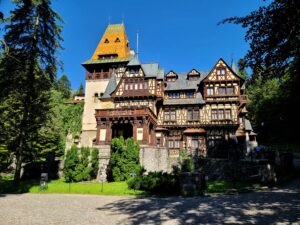
The spectacular Peles Castle is absolutely worth a visit. While the site is owned by the Romanian Royal Family, it is open to the public. Though they maintain the ‘smaller’ Pelisor Castle for their personal use, it is also open to visitors.
Entrance to the castle grounds is free. You can wander much of the outside area at your leisure. The castle interiors are generally open from Wednesday through Sunday. Hours and exact days vary throughout the year, so be sure to check their website before you go. Entrance to Peles is 50 Romanian lei (about $11 USD) and 30 lei (less than $7 USD) for Pelisor.
Sinaia Monastery
Sinaia Monastery dates back to the late-1600s. The working monastery is a significant site of importance for the Romanian Orthodox Church. It houses hordes of valuable jewels and the oldest Bible written in the Romanian language.

Visiting Sinaia Monastery is another highlight of this mountain town. The monks who live there are extremely welcoming to visitors and are happy to let you explore the grounds and church.
Sinaia Town
Sinaia is primarily a place for tourists and vacationers to escape the city, be that for cooler mountain air during Summer or to hit the slopes in Winter. However, most of Sinaia consists of residential areas stretched across the hillsides.

From my perspective, many of the houses appeared to be high-end second homes, likely serving as quiet, picturesque escapes for wealthy individuals. Perhaps these were simply the ones that stood out. There are certainly more modest houses in the mix, and I found wandering through the neighborhoods to be an exceptionally interesting activity. The mix of fancy, modern structures and old, curious homes is a fun contrast to explore.

There isn’t really that much to do in the actual town portion of Sinaia. Most points of interest are on Carol I Boulevard. That said, there isn’t much there aside from hotels and a few restaurants. Romania has a fair amount of Casinos, and there is one in Sinaia. I didn’t travel to Sinaia to gamble, but I noticed that it was closed anyway. The casino is on the edge of a nice park that is a popular place to congregate on warm evenings.

The main road through Sinaia provides further perspective of the changes in Romania. Many of the structures are evidence that the town was once much more significant than it is today. Some of the buildings must have once been home to prominent nobility (to be near the king during his Summer residence). Today, many of these structures are in disrepair, but the evidence of past grandeur remains. Others have been renovated into hotels or government buildings.
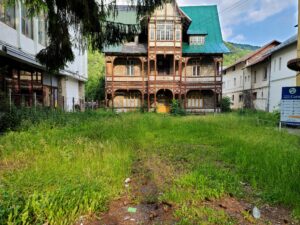
Visiting Sinaia is about the surrounding nature. The struggles of the resort town are visible around every winding road.
On one hand, it is sad to see the former glory and wealth of such a beautiful place crumbling right in front of you. On the other hand, new construction and renovations are underway. It provides unique insight into how economies and societies change when an entire government system collapses. No place is immune to economic collapse or revolution, even places of and for the upper classes.
That’s what makes strolling the streets of Sinaia all the more captivating. It’s unique. The history is all around you, and the surrounding beauty makes the scene simultaneously surreal, curious and beautiful.
Romanian Mountains
The biggest natural draw to Sinaia is the mountains. For snow sports, this is the top ski area in Romania. For summer, there are a lot of hiking trails, and the area is popular with mountain bikers, too.
If you’re like me – i.e. you don’t ski and hate cold weather – don’t fret. Summer is a perfect time to visit Sinaia. Better yet, you can enjoy the fantastic views without the snow.
The ski lift to the top (a cable car) is the most expensive thing I did in Romania. A ticket to the very top costs 70 lei, a little more than $15 USD. and that is the most expensive thing I did in Romania (what a great budget travel destination, right?!). For me, an excellent view is something for which I regularly splurge. I plan for these costs, because few things can compare to an unforgettable view.

In theory, you can hike to the summit, but that may not be practical for most travelers. The climb is several thousand feet in elevation gain and would take hours. Most of us don’t travel with proper hiking gear anyway. If you do, the Carpathians have plenty of worthy treks.
The trip to the summit via cable car takes about 20 minutes and is broken up into two cable car rides. If you are afraid of heights, skip this. The cable car is safe, but it does sway on the sharp incline. And you are, at times, suspended hundreds of feet above the ground.
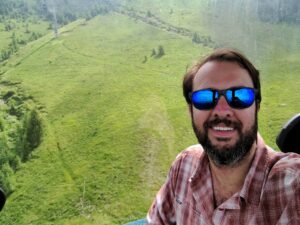
The summit affords spectacular views. There are slightly higher mountains in the distance, and the valley towns are tiny specs visible thousands of feet below you.
One of the more bizarre items on my bucket list – to be fair, most of my travel bucket list can probably be categorized on the atypical side – was to visit the Carpathian Mountains. When I first learned that there were wild, snowy mountains in Romania like this, Romania was immediately a place I wanted to visit.
The Carpathian Mountains are considered one of the few wild areas remaining in Europe. And for most people, myself included, this is not what we imagine when we think about Romania. Reaching the peak of a mountain in the Carpathians with sweeping views of other peaks and down to the valley and towns below was a great moment. Next time, I’ll be renting a car to explore deeper into the Romanian wilderness.
Check out our Romania Travel Guide!
Eating in Sinaia
Eating in Sinaia is a more challenging endeavor than other popular travel destinations in Romania. As a resort town, eating often involves hotel dining, and there are generally fewer options for cheap eats.
The food at Sinaia hotels, while more expensive than what a traveler might find in a typical Romanian meal, is pretty good. If you want more variety and cheaper prices, you simply need to walk a few blocks from your hotel.
If you want to go really cheap, there are streetside food stands where you can get a kebab for the equivalent of a few bucks, covrigi for less than a dollar or other quick snacks without breaking the bank. Don’t expect gourmet food at these “fast food” stands, but you can eat your fill of local food on a budget.

In particular, the cafes near the park are nice places to enjoy a meal on a Spring or Summer evening. Avalanche is a solid spot for affordable food and good pizza. For Romanian food, you can try some of the spots near the roundabout. Good Romanian food in Sinaia is easy to find, though it is a little more expensive than elsewhere in the country.
When to Visit Sinaia – Winter vs Summer
The best time to visit Sinaia depends on what kind of activities you want to do. Romania has a spectacularly seasonal climate, and weather changes in the mountains are considerably more pronounced.
If your interests lie in exploring town or seeing the historic sites of the area, you will want to visit during warmer times of year. Summer is great in Sinaia. The mountain air is cooler than lower elevations and ideal for wandering the town. Summer also is a great time for hiking and mountain biking.

Skiing and other snow sports enthusiasts will love Sinaia during Winter. The resort town is the top ski destination in Romania, with miles of runs that are minutes from town or a couple of hours from Bucharest. If you enjoy the cold and snow, the city is surely an attractive sight when blanketed in snow.
Where to Stay in Sinaia
As a resort town, Sinaia is home to a lot of hotels, guesthouses and small BnBs. The large hotels are generally closer to the center of the city, which is an ideal location for close proximity to restaurants, notable attractions and the train station just a few minutes away.
Aside from the larger properties, there are dozens, if not hundreds, of small guesthouses and BnBs. These range from modern villas to historic mountain cottages. They are excellent choices for a quiet holiday stay nearer to mountain/outdoor activities, but the trade-off is that properties higher up the mountainside are inconvenient for dining in town.
For budget travelers and backpackers, however, there are no hostels in the area. Don’t let this deter you from adding Sinaia to your travel itinerary. Accommodation here is cheap. I stayed in a nice hotel (see below) for less than $30 USD/night.
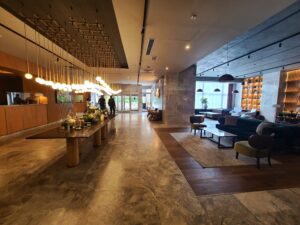
The hotel situation in Sinaia is interesting. Some of the large properties are closed or appear to be in rough shape. However, those that are open look like scenes from a 1970s postcard of Communist propaganda. And there are elements of these structures that have a splendid time capsule vibe, with the surrounding design and architecture transporting you back to days of regimes past.
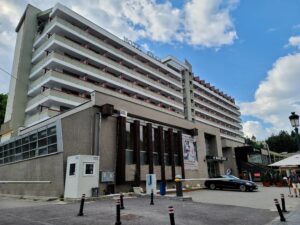
How Long Should You Stay?
If you are visiting Sinaia to see the pretty mountainside town and famous sites, you only need 1-2 days. You can visit the main attractions like Peles Castle and see a majority of the town in a solid, albeit busy, day. If you want to wander a little more, you can add an extra day to this stay. For most visitors, 2 days in Sinaia is plenty.
For those who want to dive into and experience the local nature, you will likely want a few days to enjoy the slopes and trails. The same goes for those looking to escape the busy cities and slow down. Sinaia is a great place to travel in Romania for a few days to relax and enjoy the scenery.
Transportation
The best way to get to Sinaia is via train. The line that runs through town has direct connections to Bucharest and Brasov. The total time of the trip usually comes in around one hour and 30-40 minutes.
Important note: Most tourists will want to exit the train at Sinaia station, not Sinaia Sud. Sinaia Sud is a second stop nearby, but it will leave you much farther from the center of town and the bulk of hotels and restaurants.
Tourists are often surprised when they step off the train at the station in Sinaia. Compared to the worn, tired appearance of most Romanian train stations, it looks different. The design is nicer, extra details on the fixtures are apparent, bright flowers adorn the platform and so on. The reason is that this was once the king’s personal station. It’s prettier – fit for a king, you might say.

You can also travel via bus to reach Sinaia. Buses from Brasov or Bucharest take roughly the same amount of time to reach Sinaia as the train, but you will likely have a more comfortable journey. The downside of taking the bus is that the price generally runs about double the cost of the train. For instance, one-way tickets to Sinaia from Bucharest in June 2023 were about 50 lei for the train and 110 lei for the bus.
The best, most reliable way to reach Sinaia is via train. The cars can be crowded, but it’s cheap, comfortable enough and a fairly short journey.
Check out The Hangry Backpacker’s Guide to Transportation in Romania for Tourists to help you prepare for and plan your travel to Sinaia and beyond!
Extra Sinaia Travel Tips
- Watch out for bears! One of the wonderful things about Romania is that it is one of the last remaining, truly wild places in Europe. The wilderness in this country comes with bears. This is especially important to note if you’re hiking or spending time in/near forests (such as the edge of Sinaia). Bear alerts were even sent out during my time here, so keep an eye out!
- Pay attention to Peles castle schedules. This is one of the main reasons people travel to Sinaia, so it can’t be overstated. Despite being one of the most famous landmarks in Romania, it’s not open as often as one might expect.
- The same goes for restaurants. Sinaia is absolutely a nice place to travel, but it’s clear that recent years have not been kind to the city. There are a lot of places that are closed, crumbling and abandoned. As a result, the sleepy resort town tends to shut down fairly early. If you find a good spot to eat dinner, don’t wait too long! Perhaps grab some snacks, just in case.

Sinaia is worth a visit for many reasons. Whether you’re escaping the city, want to experience a resort town time capsule or you’re simply curious, all of that is found here on the edge of Romania’s Carpathian Mountains. The incredible natural beauty, the history and fascinatingly visible struggles, contrasts and rebirth make it an excellent place to travel in Romania. And, in spite of that, Sinaia will return to its former glory eventually.

Places like this are special. Humans have been attracted to idyllic settings like this for centuries, and that is one constant that will not wither away.

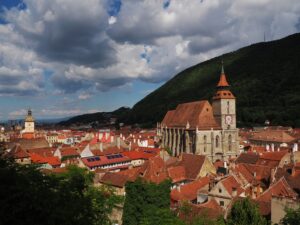
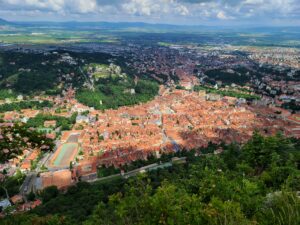
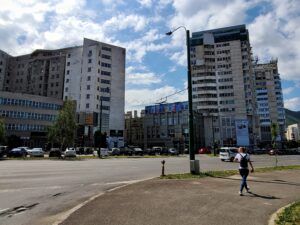
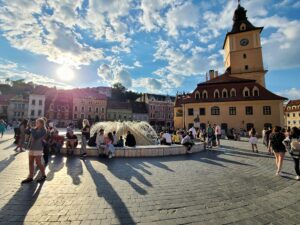
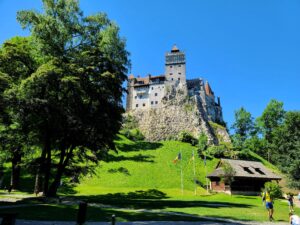
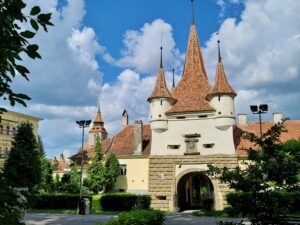
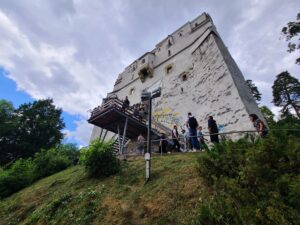
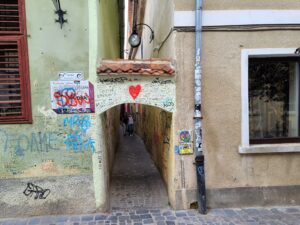
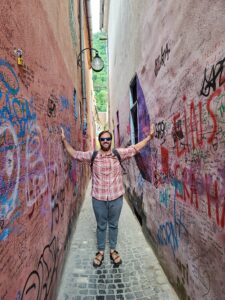
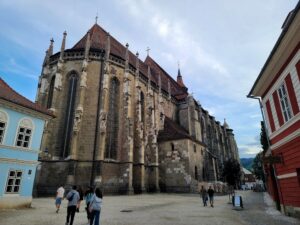
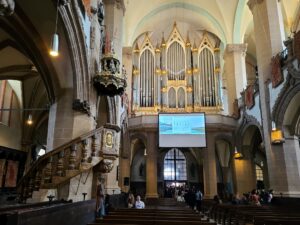
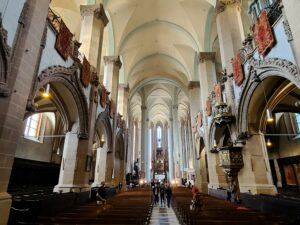
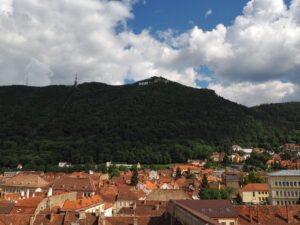
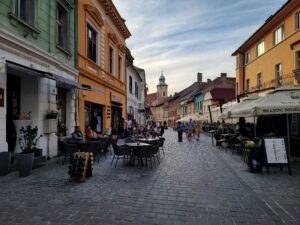
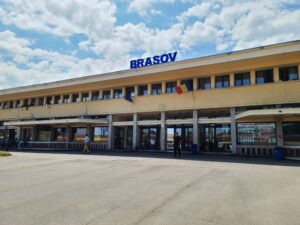
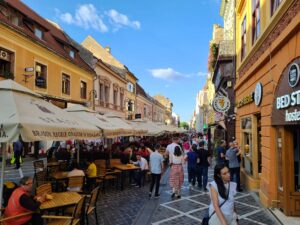
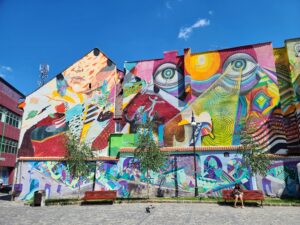
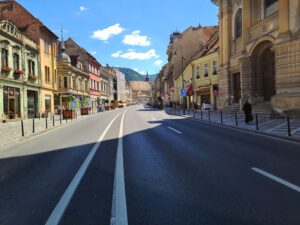















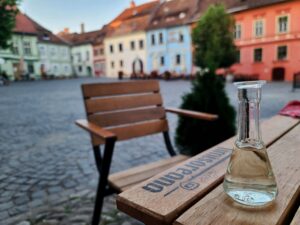
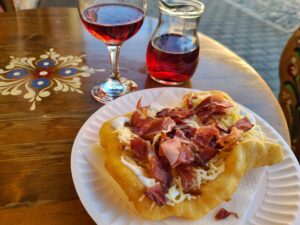




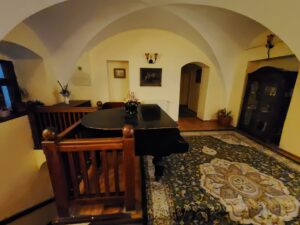

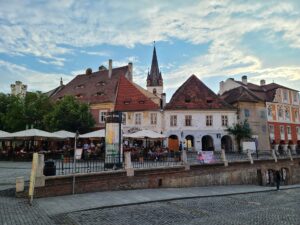
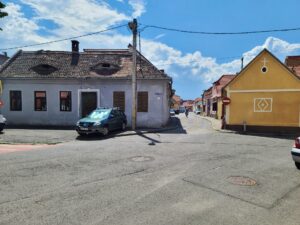
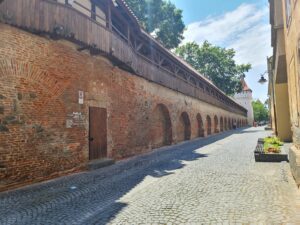
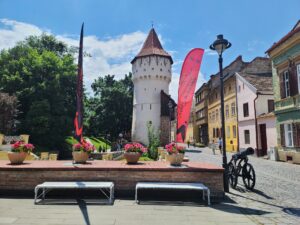
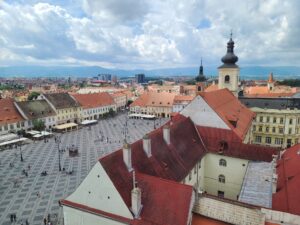
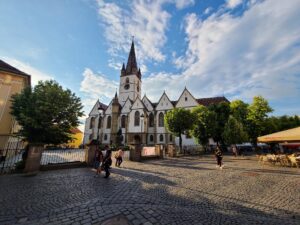
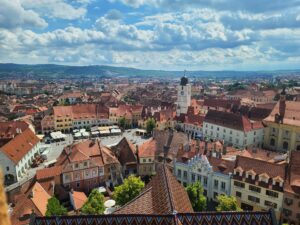
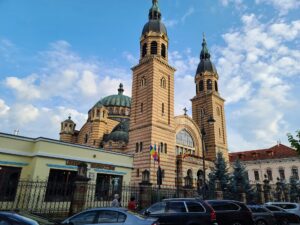
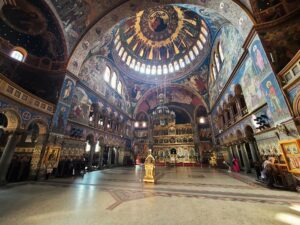
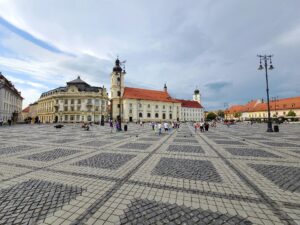
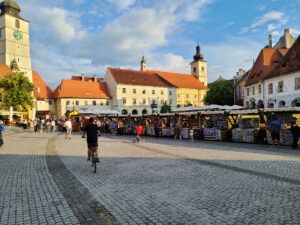
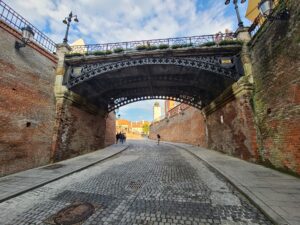
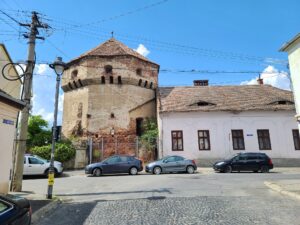
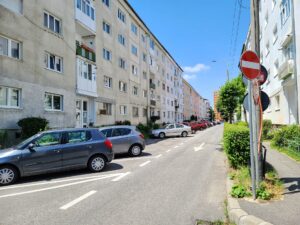
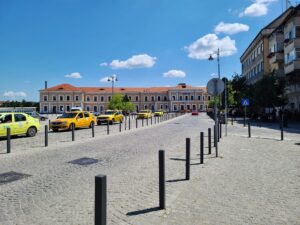
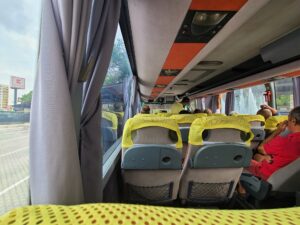
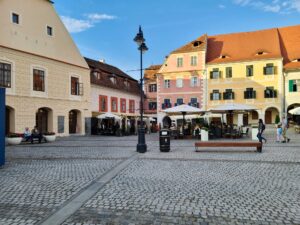
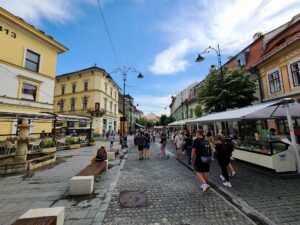
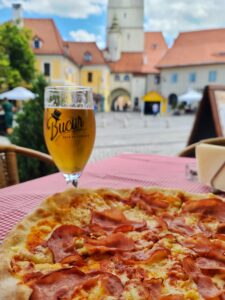
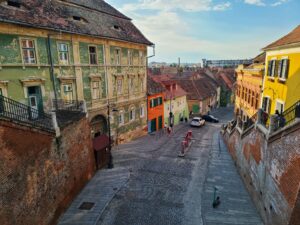
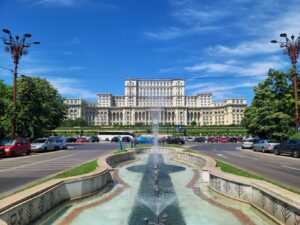
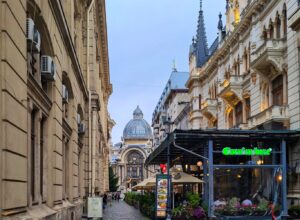

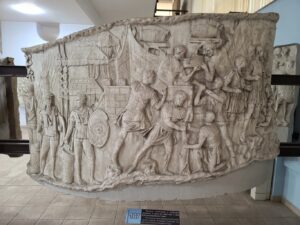
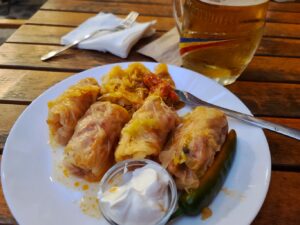
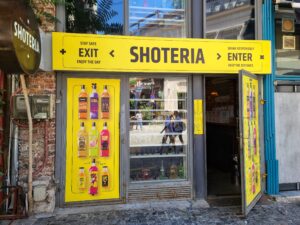
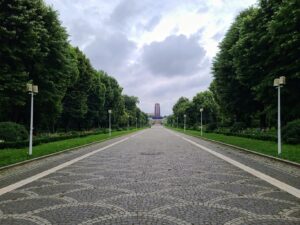
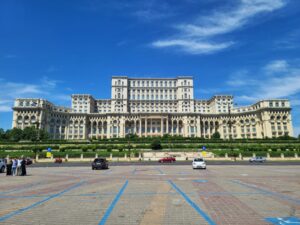
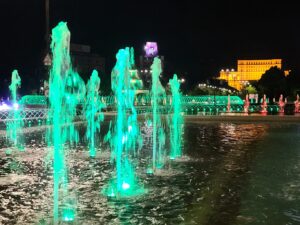
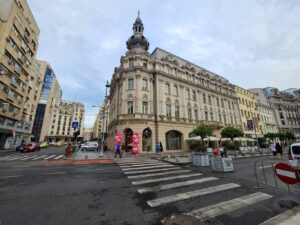
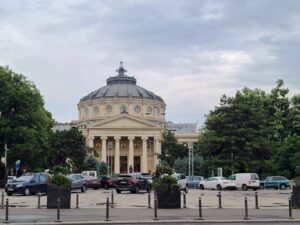
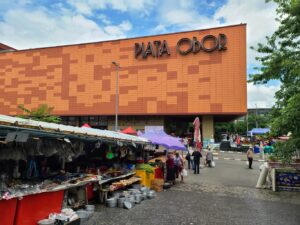
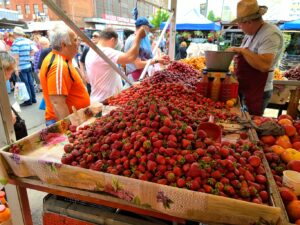

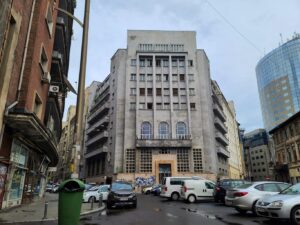
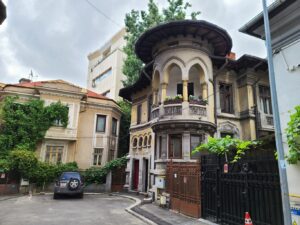
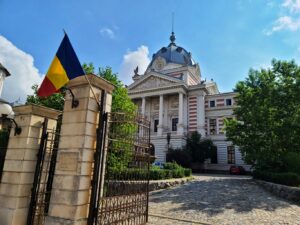












You must be logged in to post a comment.